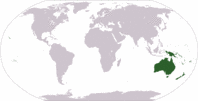Hydriastele flabellata
| Hydriastele (high-dree-Ah-STEL-eh) flabellata (flah-BEL-laht-ah) | |||||||
|---|---|---|---|---|---|---|---|
 Photo-Rare Palm Seeds.com | |||||||
| Scientific Classification | |||||||
| |||||||
| Synonyms | |||||||
|
| |||||||
| Native Continent | |||||||
|
| |||||||
| Morphology | |||||||
| |||||||
| Culture | |||||||
|
| |||||||
| Survivability index | |||||||
|
| |||||||
| Common names | |||||||
|
| |||||||
Contents
Habitat and Distribution
Endemic to Northwestern New Guinea.Distribution:—Scattered across New Guinea from the Bird’s Head Peninsula in western New Guinea to Central Province in Papua New Guinea. PETER PETOE, CHARLIE D. HEATUBUN & WILLIAM J. BAKER Phytotaxa 370 (1) © 2018 Magnolia Press.Habitat:—Primary rainforest, mainly lowland, on slopes, ridges and riverbanks. On waterlogged alluvium, limestone karst and volcanic soils, 0–700 m. PETER PETOE, CHARLIE D. HEATUBUN & WILLIAM J. BAKER Phytotaxa 370 (1) © 2018 Magnolia Press.
Description
Clustering, very slender understorey palm to 4 m tall, bearing 4–8 leaves per crown. Stem 1–2 cm in diam. Leaf 35–90 cm long including petiole; sheath 8–23 cm long; petiole 10–30 cm; lamina 20–65 cm long, entire-bifid, bijugate or more finely dissected with up to 6 leaflets per side, ramenta apparently lacking; leaflets (when present) regularly or irregularly arranged, single- or multi-fold, cuneate, praemorse apically. Inflorescence 8–15 cm long including 1–3 cm peduncle, spicate or branched to 1 order, protandrous; rachillae 1–2 (up to 3 rachillae known from cultivation), green to yellow; triads spirally arranged. Staminate flower 8–10 × 2–3 mm in bud, cream to violet; stamens 6. Pistillate flower 3–5 × 2–3.5 mm in bud, cream to light green or lavender, with free sepals and free petals with conspicuous, triangular and valvate tips. Fruit 12–15 × 5–8 mm when ripe, ellipsoid to fusiform, red, with a distinct, dark, sclerotic zone encircling apical stigmatic remains (up to about 1.5 mm in diam.). Seed 10–12 × 4–7 mm, ellipsoid; endosperm homogeneous. PETER PETOE, CHARLIE D. HEATUBUN & WILLIAM J. BAKER Phytotaxa 370 (1) © 2018 Magnolia Press. Editing by edric.
Culture
Cold Hardiness Zone: 10b
Comments and Curiosities
Notes:—Hydriastele flabellata is an understorey palm with a distinctive, highly variable leaf morphology ranging from entire-bifid to pinnate with up to six cuneate leaflets on each side of the rachis. The species is further distinguished by its inflorescences, which are 8–15 cm long and consist of one (spicate) or two rachillae (up to three rachillae is known from cultivation [Baker 1448]), and homogeneous endosperm. Hydriastele flabellata might be confused with H. montana, which is similar in inflorescence morphology but has leaves with 9–11 narrowly linear leaflets on each side of the rachis, or with H. pinangoides, which can have similar looking foliage but is usually taller and displays 18–30 cm long inflorescences with 2–6 rachillae and ruminate endosperm. PETER PETOE, CHARLIE D. HEATUBUN & WILLIAM J. BAKER Phytotaxa 370 (1) © 2018 Magnolia Press.
Heatubun et al. (2018) discuss the morphology and delimitation of H. flabellata in more detail. PETER PETOE, CHARLIE D. HEATUBUN & WILLIAM J. BAKER Phytotaxa 370 (1) © 2018 Magnolia Press.
Uses:—Leaves used as food wrapping, stems used for making arrow shafts and fish spear handles. PETER PETOE, CHARLIE D. HEATUBUN & WILLIAM J. BAKER Phytotaxa 370 (1) © 2018 Magnolia Press.
Vernacular names:—Mplemponik (Sayal), Filiawoi Yamu (Bewani). PETER PETOE, CHARLIE D. HEATUBUN & WILLIAM J. BAKER Phytotaxa 370 (1) © 2018 Magnolia Press.
Conservation status:—Least Concern (LC; Heatubun et al. 2018). PETER PETOE, CHARLIE D. HEATUBUN & WILLIAM J. BAKER Phytotaxa 370 (1) © 2018 Magnolia Press.
A beautiful, small, clustering species with large, undivided leaves, native to rainforests in northwestern New Guinea. (RPS.com)
- IMAGE GALLERY
Hydriastele flabellata. A–B. Habit. C. Inflorescence with triads. D. Infructescences. A, C from Baker et al. 879; B from Baker et al. 1448 (cultivated specimen); D from Timika, western New Guinea. All photos: W.J. Baker. PETER PETOE, CHARLIE D. HEATUBUN & WILLIAM J. BAKER Phytotaxa 370 (1) © 2018 Magnolia Press.
Hydriastele flabellata. A–B. Habit. C. Inflorescence with triads. D. Infructescences. A, C from Baker et al. 879; B from Baker et al. 1448 (cultivated specimen); D from Timika, western New Guinea. All photos: W.J. Baker. PETER PETOE, CHARLIE D. HEATUBUN & WILLIAM J. BAKER Phytotaxa 370 (1) © 2018 Magnolia Press.
Hydriastele flabellata. A–B. Habit. C. Inflorescence with triads. D. Infructescences. A, C from Baker et al. 879; B from Baker et al. 1448 (cultivated specimen); D from Timika, western New Guinea. All photos: W.J. Baker. PETER PETOE, CHARLIE D. HEATUBUN & WILLIAM J. BAKER Phytotaxa 370 (1) © 2018 Magnolia Press.
Hydriastele flabellata. A–B. Habit. C. Inflorescence with triads. D. Infructescences. A, C from Baker et al. 879; B from Baker et al. 1448 (cultivated specimen); D from Timika, western New Guinea. All photos: W.J. Baker. PETER PETOE, CHARLIE D. HEATUBUN & WILLIAM J. BAKER Phytotaxa 370 (1) © 2018 Magnolia Press.
External Links
References
Phonetic spelling of Latin names by edric.
Special thanks to Geoff Stein, (Palmbob) for his hundreds of photos.
Special thanks to Palmweb.org, Dr. John Dransfield, Dr. Bill Baker & team, for their volumes of information and photos.
Glossary of Palm Terms; Based on the glossary in Dransfield, J., N.W. Uhl, C.B. Asmussen-Lange, W.J. Baker, M.M. Harley & C.E. Lewis. 2008. Genera Palmarum - Evolution and Classification of the Palms. Royal Botanic Gardens, Kew. All images copyright of the artists and photographers (see images for credits).
PETER PETOE, CHARLIE D. HEATUBUN & WILLIAM J. BAKER Phytotaxa 370 (1) © 2018 Magnolia Press.
Many Special Thanks to Ed Vaile for his long hours of tireless editing and numerous contributions.
























